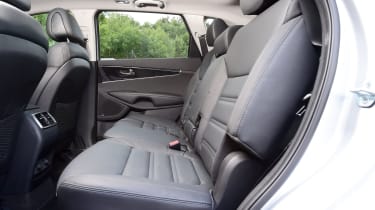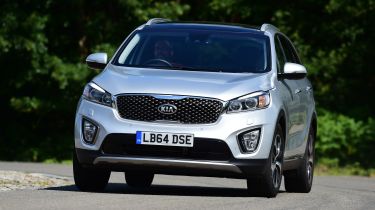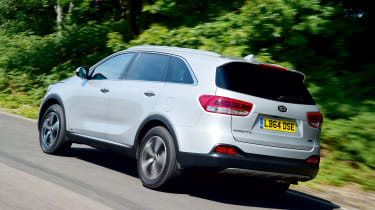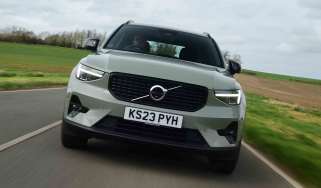Kia Sorento (2015-2020) review
The Kia Sorento SUV is a large and luxurious seven-seater that packs in plenty of tech for the price

The Kia Sorento is large and spacious, and is one of the roomiest seven-seater SUVs on sale. Every model comes with four-wheel drive as standard, so it’s also capable off-road, great for towing and generally stands up well to utilitarian tasks, despite its upmarket feel inside.
That simplicity continues under the bonnet, as the only engine option in the Sorento range is a 2.2-litre CRDi diesel – although buyers have a choice of manual and automatic gearboxes.
Despite the car’s rugged abilities, the interior is very classy and a real step up from Kias of old. It also provides plenty of room and there’s no shortage of equipment as standard, plus for a big, diesel 4x4, the cabin is impressively quiet and refined. The Sorento isn’t as good to drive as more expensive SUVs, but it’s comfortable and decent value for money, although running costs are on the high side when compared to newer rivals.
For many years, the Kia Sorento has been the biggest car the Korean firm has had for sale in the UK. It's now in its third generation, although a major update in 2018 means it's a lot more upmarket than it ever used to be.
Used - available now

2019 KIA
Sorento
47,519 milesAutomaticDiesel2.2L
Cash £22,431
2022 KIA
Sorento
48,402 milesAutomaticPetrol1.6L
Cash £28,869
2019 KIA
Sorento
38,516 milesAutomaticDiesel2.2L
Cash £23,223
2022 KIA
Sorento
35,975 milesAutomaticPetrol1.6L
Cash £25,197One thing that has remained constant is the fact the Sorento is a full-size SUV with seven seats. All model come with four-wheel drive, too, which is signified by the KX trim naming structure used within the range. Because the Sorento is a large seven-seat SUV, it has a number of talented rivals to go up against. Chief among these are the Skoda Kodiaq and SEAT Tarraco (which share the same running gear), while the Hyundai Santa Fe shares running gear with the Sorento.
Also worth considering if you only need the third row of seats on occasion are cars such as the Nissan X-Trail, Honda CR-V and Land Rover Discovery Sport. And in some ways the Sorento is a budget alternative to cars such as the Land Rover Discovery, Volvo XC90 and Audi Q7, as it offers similar space and kit but for considerably less money, with the range starting from around £30,250.
Every version of the Sorento is powered by a 197bp 2.2 CRDi diesel. This comes with a six-speed manual gearbox or the option of an eight-speed auto, although higher spec cars get the auto as standard. Also standard on all cars is four-wheel drive, so fuel economy isn't as good as it could be, although the introduction of the 8-speed auto is designed to boost efficiency.
Thanks to the Sorento's size, there's lots of space inside, including a van-like load bay if you fold all of the back seats completely flat. With the seats in place, there's plenty of space for all passenger, while standard equipment is pretty good across the board. KX-1 is a little spartan compared to other specs, but you still get 17-inch wheels, roof rails, cornering lamps, privacy glass, and cruise control, all round electric windows and standard DAB audio with Bluetooth.

At the top of the range, there are KX-3 and KX-4 models that add luxuries like a panoramic sunroof, powered leather seats and driving assistance systems such as lane departure warning, cross traffic alert and blind-spot detection. KX-4 cars also feature automatic emergency braking. At the very top of the range are GT-Line and GT-Line S cars, although the most expensive GT-Line S weighs in at around £43,000, so it's a victim of the £40k premium car tax surcharge.
For an alternative review of the latest Kia Sorento SUV visit our sister site carbuyer.co.uk




